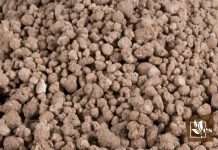In today’s health-conscious world, where lifestyle and optimal health are at the forefront of many minds, having tools to personalize one’s nutrition can be game-changing. I’ve found that the Heart and Soil calculator serves precisely that purpose. It provides a tailored approach to an animal-based diet, factoring in individual goals and activity levels, which I believe is vital for anyone looking to fine-tune their health.

I understand that following a specialized diet can be complex. Utilizing resources like the Heart and Soil calculator simplifies the process by offering clear guidance on food choices and quantities. From personal experience, this level of customization supports adherence to healthy eating practices, which is crucial for achieving and maintaining optimal health. The calculator reflects a fundamental shift towards personalized nutrition, an approach I strongly advocate for those dedicated to improving their lifestyle and well-being.
JUMP TO TOPIC
The Fundamentals of an Animal-Based Diet
In my experience with an animal-based diet, balancing macronutrients and including a variety of animal-sourced foods is crucial for health benefits.
Understanding Macronutrients
When constructing an animal-based diet, I pay attention to three macronutrients: proteins, carbohydrates, and fats. Proteins are the building blocks of muscles and enzymes, making them essential. Carbohydrates, though minimized in this diet, are used for immediate energy. Fats contribute to long-term energy storage and hormone production.
The Role of Meat in Nutrition
💥 Meat’s Role: Meat, including organ meats, is a centerpiece in my animal-based diet for its high-quality protein and rich nutrient profile, providing vitamins and minerals crucial for immune function and nutrient absorption.
Inclusion of Dairy and Eggs
I include raw dairy and eggs in my animal-based diet due to their high nutritional value. Raw dairy provides beneficial fats, like casein and whey proteins, and is also a great source of calcium. Eggs are another powerhouse, with vital nutrients encapsulated in both the white and the yolk.
- Eggs: High in protein, vitamins, and essential fatty acids.
- Raw Dairy: A complete food with fats, carbohydrates, and protein.
The Impact of Diet on Body and Health
A thoughtful approach to diet can have a profound impact on various aspects of health, including weight management, immune and digestive functions, and addressing inflammatory and autoimmune conditions.
Weight Management Strategies
When managing weight, my goal body weight guides my macronutrient intake, balancing proteins, fats, and carbohydrates according to my specific needs. I focus on consuming protein at a rate of 1-1.2 grams per pound of my goal body weight, fats at 0.8-1 grams, and carbohydrates at 0.7-1.2 grams to support my metabolism and energy levels. I ensure regular physical activity, aiming for at least 150 minutes of moderate or 75 minutes of vigorous exercise weekly, to complement my dietary efforts in achieving a healthy weight.
Improving Digestive and Immune Function
My diet plays a critical role in bolstering digestive health and immune function. By prioritizing whole grains and a variety of fibers, I encourage good digestive health. Foods rich in vitamins and minerals support a strong immune system, reducing susceptibility to illness. Furthermore, I pay attention to my liver health through foods that assist its natural detoxifying processes, sustaining overall health and energy.
Addressing Inflammation and Autoimmune Conditions
Diet is integral to managing inflammation and autoimmune issues. A balance of omega-3 to omega-6 fatty acids is essential in countering inflammatory responses. Inclusion of anti-inflammatory foods like leafy greens, while avoiding foods high in arachidonic acid such as certain meats, can help modulate inflammatory processes. This approach is not only vital for preventing flare-ups in autoimmune illnesses but also beneficial for maintaining heart health by reducing risks associated with chronic inflammation.
I’ve personally experienced improvements in my mood and a decrease in inflammation-related discomfort by making dietary adjustments and reducing pro-inflammatory foods.
Leveraging the Carnivore Diet for Optimal Health
Embarking on the carnivore diet can be a life-changing decision when aiming for optimal health. Strategies are key in integrating this dietary pattern into a sustainable lifestyle.
Meal Planning and Cooking with the Carnivore Code Cookbook
As a proponent of the carnivore diet, Dr. Paul Saladino’s “The Carnivore Code” has been instrumental in my journey toward better health. His cookbook has provided me with a foundation for meal planning, ensuring that my nutritional needs are met while adhering strictly to carnivore principles. The book includes:
- Ribeye steak
- Ground beef
- Lamb
- Organ meats
Each recipe is crafted to promote immune system strength and optimal health, utilizing high-quality animal products as the sole source of nutrition.
Cooking with the Carnivore Code cookbook isn’t just a means to an end. It’s a delightful way to explore the richness of flavors that animal-based nutrition offers while establishing habits that contribute to long-term health goals.
Adapting Your Lifestyle for Success
Making the carnivore diet a sustainable part of my life has required me to reassess and adapt my lifestyle. This means prioritizing sleep, as rest is crucial for recovery, especially when physical activity levels are high as part of the lifestyle adjustment. It’s also essential to monitor how the diet affects my body, making tweaks as necessary to achieve desired results.
Here’s a snapshot of the key lifestyle adaptations I’ve made:
| Dietary Habits | Sleep | Physical Activity |
|---|---|---|
| Strict adherence to animal-based foods | 7-9 hours of quality sleep | Regular, structured exercise |
| Constant nutrient intake monitoring | Consistent sleep schedule | Incorporating both strength and conditioning |
Maintaining this lifestyle has been critical in achieving the systemic benefits that the carnivore diet promises. By aligning my eating patterns with my sleep and activity habits, I’ve been able to observe significant improvements in my overall health and wellbeing.
Advancing Your Gardening Skills
When I tend to my garden, I focus on precision and efficiency, ensuring every effort contributes to robust growth. I leverage tools like soil calculators and optimize raised bed configurations to nurture my plants.
Calculating Soil Needs with a Soil Calculator
I use a soil calculator to determine the exact amount of soil required for my garden beds. It’s essential to know the volume of soil needed, as guessing can lead to over- or under-purchasing. This has not just helped me save money but also prevented the hassle of dealing with excess soil.
Creating and Nurturing Raised Beds
My experience has taught me that raised beds enhance drainage, improve soil conditions, and make maintenance easier. I build my beds to a depth of 6-10 inches and ensure that they are filled with a mix of compost and soilless potting mix to promote healthy plant roots. Additionally, raised beds prevent soil compaction and provide good aeration, vital for root health.
💥 Note: It’s critical to remove weeds and loosen the soil beneath the raised bed to improve overall plant health.
Optimizing Plant Growth
To give my plants the best chance to thrive, I pay careful attention to using nutrient-rich organic matter like compost. This feeds the plants while improving soil structure. For vegetable gardens, the addition of organic matter is especially crucial as it supports the growth of stems and leaves which in turn helps in producing more fruits or vegetables.
My plants need an environment that encourages their roots to spread out and absorb nutrients. That is why I ensure the soil is loose and fertile, for optimum root health.











